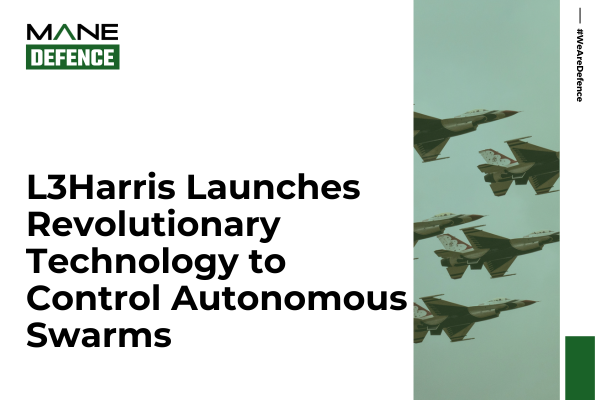L3Harris Launches Revolutionary Technology to Control Autonomous Swarms
24 Apr, 20252 minsL3Harris Technologies has unveiled a groundbreaking new software system designed to control ...

L3Harris Technologies has unveiled a groundbreaking new software system designed to control thousands of autonomous assets simultaneously through a single user interface. Named AMORPHOUS (Autonomous Multi-domain Operations Resiliency Platform for Heterogeneous Unmanned Swarms), this technology represents a significant leap forward in military drone swarm capabilities.
A Force Multiplier Across Domains
The open architecture software enables operators to control a diverse mix of uncrewed platforms, payloads and systems—even those manufactured by other companies. This interoperability is crucial for United States and allied military forces looking to coordinate complex multi-domain operations.
"Autonomy is a force multiplier, which is why we have designed AMORPHOUS as a multi-domain, multi-mission capability that rapidly integrates a variety of uncrewed systems across the battlespace," said Jon Rambeau, President of Integrated Mission Systems at L3Harris.
In a subsequent interview with Janes, Rambeau elaborated on the scale of operations AMORPHOUS can facilitate: "We are really trying to address the need the [US] military will have as they start to really field autonomous systems in large numbers. The goal is to control those assets with a very small number of operators—not in the hundreds [but] into the thousands of autonomous systems under a single C2 digital backbone."
Smart Swarm Technology
What sets AMORPHOUS apart is its approach to swarm intelligence. Rather than relying on centralised control, the system supports decentralised decision-making, allowing individual unmanned assets to perform tasks autonomously and make real-time tactical decisions within the network.
"A command would be passed to the [drone] swarm, and then members of the swarm would communicate with one another, and they would determine how to jointly accomplish a given mission," Rambeau explained. "If one member of the [swarm] falls out, the others recognise that it happened, and they communicate about how to fill that gap."
This distributed approach creates resilience within the swarm and reduces the burden on human operators, who no longer need to micromanage individual assets.
Talent Implications and Workforce Development
The introduction of AMORPHOUS has significant implications for military personnel and the defence industry workforce. As autonomous systems become more prevalent on the battlefield, a new generation of operators will need specialised training to manage these complex swarm operations.
Defence analyst Dr. Eleanor Marsden notes: "Technologies like AMORPHOUS are changing the skill profiles required in modern military operations. We'll see increasing demand for personnel who combine tactical understanding with technical aptitude—individuals comfortable with both military strategy and advanced computing concepts."
L3Harris is already working to address this skills gap through partnerships with educational institutions and internal training programmes. The company has initiated a Swarm Operations Specialist training track for both military clients and its own workforce, recognising that the human element remains crucial even as autonomy increases.
"While AMORPHOUS reduces the number of operators needed per platform, it creates new roles focused on mission planning, swarm strategy, and system optimization," explains Tyler Richardson, L3Harris's Director of Workforce Development. "We're investing heavily in building this talent pipeline, both by upskilling current employees and recruiting specialists in artificial intelligence, distributed computing, and autonomous systems."
Government Partnerships and Testing
L3Harris is currently developing prototypes using the AMORPHOUS architecture under contracts with the U.S. Army and the Defense Innovation Unit. The system has already demonstrated its flexibility and interoperability by controlling multiple separate assets across different vehicle types operating in various domains during government-managed tests.
The company emphasised its collaboration with venture-backed and non-traditional partners to accelerate the development of emerging defence capabilities, highlighting a shift toward more agile and diverse innovation networks in the defence sector.
Future Applications
While initially focused on military applications, the underlying technology could eventually have implications for civilian applications such as disaster response, border security, and environmental monitoring. The ability to coordinate large numbers of autonomous systems efficiently could revolutionise how organisations approach complex operations requiring distributed sensing and response capabilities.
As autonomous systems continue to evolve, technologies like AMORPHOUS represent a fundamental shift in how military operations are conducted. By enabling a small number of operators to control vast swarms of uncrewed systems, L3Harris is helping to redefine the future of warfare while creating new career paths for the next generation of defence professionals.



